Learning as arts practice, your a MOOC!
At the recent launch event for the new Tate Research Centre: Learning, the Director Tate Modern Chris Dercon commented that ‘learning could be seen as an art in itself’. The idea of ‘learning as a form of arts practice’ carries a personal resonance for me having been engaged in projects for a number of years, which explore the use of digital technologies for informal learning and in arts practice, most notably in the process.arts and the DIAL project work.
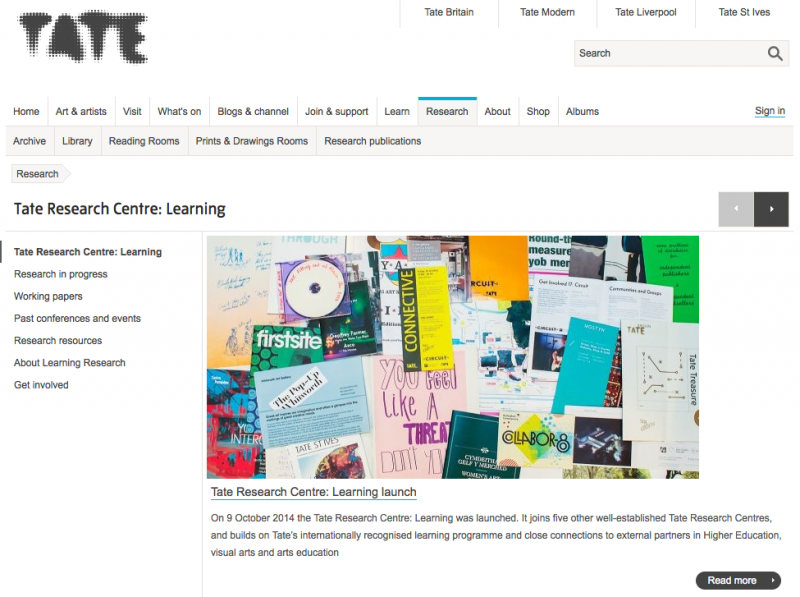 Tate’s new learning research centre sees value in openness and risk and has creative practices at its centre. Risk was discussed at length at the launch event and what risk meant to them, mainly the risk was in their approach to research, which is notably different to the formal research constraints the education/HE sector. What was missing from the debate was a conversation around what openness means to the new learning research centre?
Tate’s new learning research centre sees value in openness and risk and has creative practices at its centre. Risk was discussed at length at the launch event and what risk meant to them, mainly the risk was in their approach to research, which is notably different to the formal research constraints the education/HE sector. What was missing from the debate was a conversation around what openness means to the new learning research centre?
In the same week I was asked to present on the question ‘How do you see Digital Technologies affecting teaching and learning across CCW (Chelsea, Camberwell & Wimbledon art schools) in the next five years?’ slides for this presentation can be viewed here. I started the presentation by questioning the need to include a reference to ‘Technologies’ as we could say its more helpful to see digital technologies as all pervasive, affecting everything we do, rather than being seen a separate entity.
Through the DIAL project work we found that digital learning and teaching is mostly subjective and can vary dependent on the tool or the process, David White’s visitor and residence mapping process provides a useful means of identifying how we operate online. Influenced by David's V&R mapping process I created a digital awareness and integration map to try and capture a college perspective of Digital. For this I used an awareness and integration matrix (below), this has also been aligned with Dave Snowden’s Cynefin framework, a really useful sense making model.
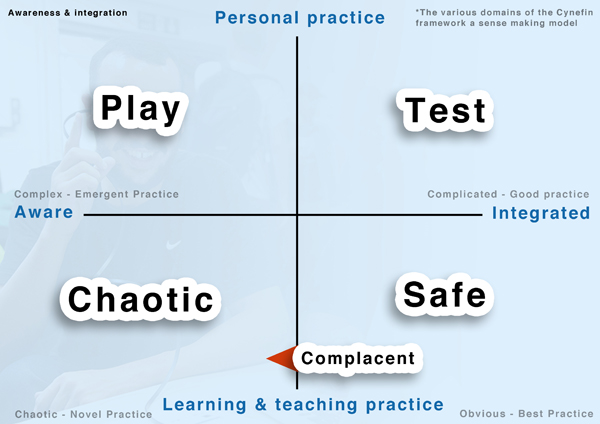 |
How do you see Digital Technologies affecting teaching and learning across CCW in the next five years from Chris Follows
From my experience most formal digital learning seems to take place in the chaotic and the safe quadrant:
|
Play quadrant Often neglected by universities but fundamental to the development of emergent creative and learning and teaching practice. Play and experimentation with new and emergent technologies, process and services could be seen as the domain of grassroots practice, sometimes straddling the institution (formal learning) environment and the personal/practice (informal learning) environment. |
Test quadrant New technologies, process and services can be piloted, tested and embedded in an incubator style learning and teaching environment. The life span in this quadrant may be limited and dependent on grassroots support and local or project funding. Moving into the safe quadrant could provide long-term stability but can also equally Transition into an official service is likely to raise questions as to how institutions successfully support and develop previously autonomous and independent grassroots innovation without homogenising innovation. |
|
The chaotic quadrant This is where new technologies, trends and process are often dropped/forced into learning and teaching environments in order to keep up-to-date with developments. Time for play or experimentation with new technologies and process are limited and therefore the local needs of the user are often overridden. More than often the essential training and culture change work is and additional afterthought or inadequate. |
The safe quadrant Tried and tested technologies, process and services are integrated or in the process of being integrated into formal stable learning and teaching environment. Technologies, process and services in the safe quadrant are in danger of becoming too rudimentary and could fall into the chaotic quadrant if they are no longer fit for purpose. |
And some examples of this in practice:
| Play | Test |
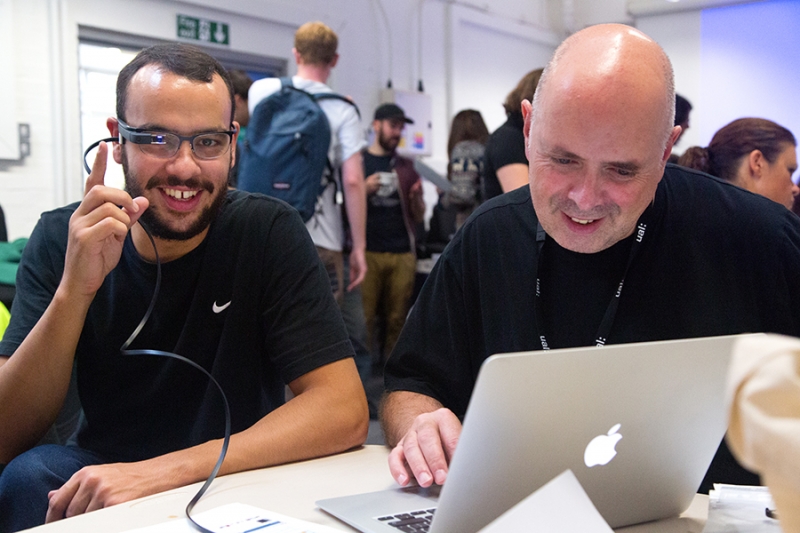 |
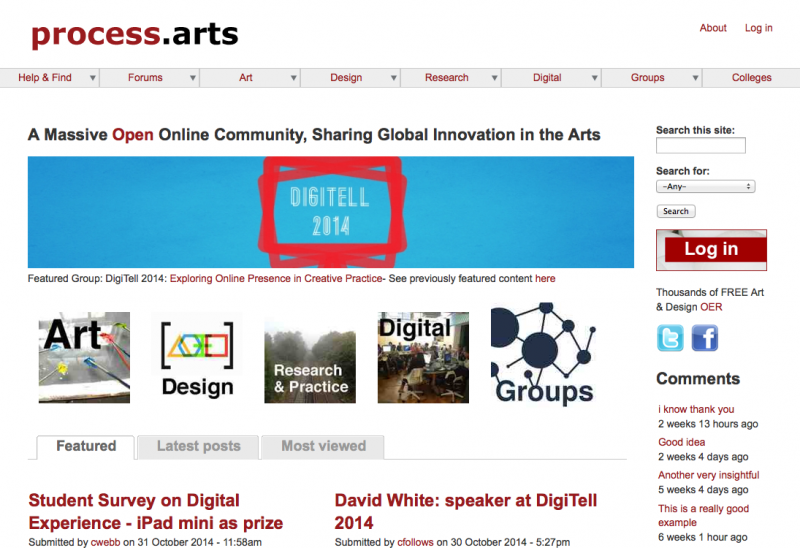 |
| Chaotic | Safe |
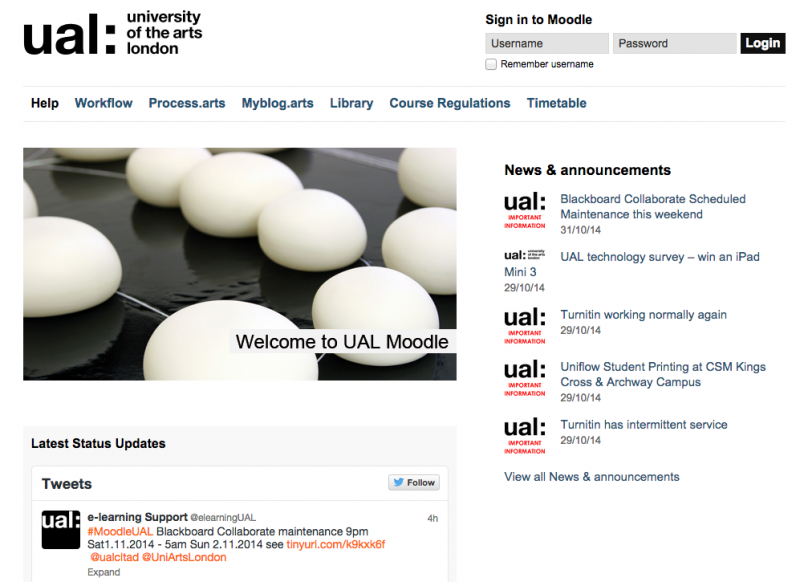 |

This Work, Learning as arts practice, your a MOOC!, by cfollows is licensed under a Creative Commons Attribution-ShareAlike 4.0 International license.


